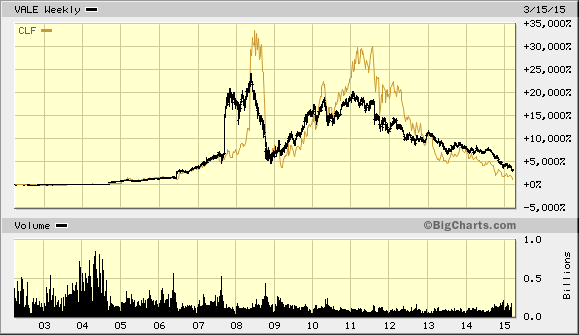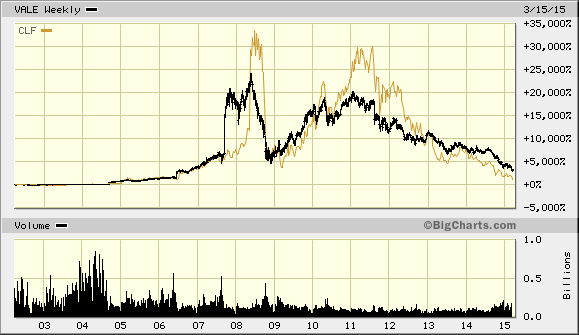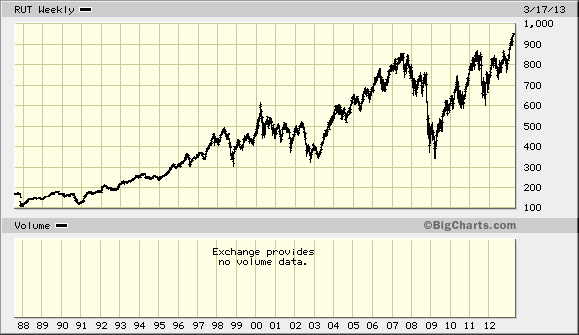Our last lesson was in Mean Reversion (Chapter 5 in Deep Value) discussed http://wp.me/p2OaYY-2Ju View this video on a very MEAN Reversion.
We must understand full cycles and reversion to the mean. Let’s move on to reading Chapter 2: A Blueprint to a better Quantitative Value Strategy in Quantitative Value.
Investors should be skeptical of history-based models. Constructed by a nerdy-sounding priesthood using esoteric terms such as beta, gamma, sigma and the like, these models tend to look impressive. Too often, though, investors forget to examine the assumptions behind the symbols. Our advice: Beware of geeks bearing formulas. -Warren Buffett, Shareholder Letter, 2000.
A WONDERFUL BUSINESS
Greenblatt defined Buffett’s definition of a good business as a high Return on Capital (ROC) – EBIT/Capital
Capital is defined as fixed asses + working capital (current assets minus current liabilities) minus excess cash.
ROC measures how efficiently management has used the capital employed in the business. The measure excludes excess cash and interest-bearing assets from this calculation to focus only on those assets actually used in the business to generate the return.
A BARGAIN PRICE
High earning yield = EBIT/TEV
TEV + Market Cap. + Total debt – minus excess cash + Preferred Stock + minority interests, and excess cash means cash + current assets – current liabilities.EBIT/TEV enables and apples-to-apples comparison of stock with different capital structures.
Improving on the Magic Formula?
ROC defined as Gross profitability to total assets.
GPA = (Revenue – Cost of Goods Sold)/Total Assets
GPA is the “cleanest” measure of true economic profitability.
See this study Gross Profitability a Better Metric and see pages 46-49 in Quant. Value. (the book was sent to deep-value group on Google)
The authors found GPA outperformed as a quality measure the magic formula. Note on page 48, Table 2.3: Performance Stats for Common Quality Measures (1964 – 2011) that most simple quality measures do NOT provide any differentiation from the market!
FINDING PRICE, Academically–Book value/Market Price
The authors found that analyzing stocks along price and quality contours using the Magic Formula and its generic academic brother Quality and Price can produce market beating results
The authors: “Our study demonstrates the utility of a quantitative approach to investing. Relentlessly pursuing a small edge over a long period of time, through booms and busts, good economies and bad, can lead to outstanding investment results.”
Ok, let’s come back to quality and avoiding value/death traps in the later chapters (3 and 4) in Quantitative Value. We are just covering material in Chapter 2.
INVESTORS BEHAVING BADLY
Investors and the Magic Formula
Adding Your Two Cents May Cost a Lot Over the Long Term by Joel Greenblatt
01-18-2012 (Full article: Adding Your Two Cents
Gotham Asset Management managing partner and Columbia professor Joel Greenblatt explains why investors who ‘self-managed’ his Magic Formula using pre-approved stocks underperformed the professionally managed systematic accounts.
So, what happened? Well, as it turns out, the self-managed accounts, where clients could choose their own stocks from the pre-approved list and then follow (or not) our guidelines for trading the stocks at fixed intervals didn’t do too badly. A compilation of all self-managed accounts for the two-year period showed a cumulative return of 59.4% after all expenses. Pretty darn good, right? Unfortunately, the S&P 500 during the same period was actually up 62.7%.
“Hmmm….that’s interesting”, you say (or I’ll say it for you, it works either way), “so how did the ‘professionally managed’ accounts do during the same period?” Well, a compilation of all the “professionally managed” accounts earned 84.1% after all expenses over the same two years, beating the “self managed” by almost 25% (and the S&P by well over 20%). For just a two-year period, that’s a huge difference! It’s especially huge since both “self-managed” and “professionally managed” chose investments from the same list of stocks and supposedly followed the same basic game plan.
Let’s put it another way: on average the people who “self-managed” their accounts took a winning system and used their judgment to unintentionally eliminate all the outperformance and then some! How’d that happen?
1. Self-managed investors avoided buying many of the biggest winners.
How? Well, the market prices certain businesses cheaply for reasons that are usually very well-known (The market is a discounting mechanism). Whether you read the newspaper or follow the news in some other way, you’ll usually know what’s “wrong” with most stocks that appear at the top of the magic formula list. That’s part of the reason they’re available cheap in the first place! Most likely, the near future for a company might not look quite as bright as the recent past or there’s a great deal of uncertainty about the company for one reason or another. Buying stocks that appear cheap relative to trailing measures of cash flow or other measures (even if they’re still “good” businesses that earn high returns on capital), usually means you’re buying companies that are out of favor.
These types of companies are systematically avoided by both individuals and institutional investors. Most people and especially professional managers want to make money now. A company that may face short-term issues isn’t where most investors look for near term profits. Many self-managed investors just eliminate companies from the list that they just know from reading the newspaper face a near term problem or some uncertainty. But many of these companies turn out to be the biggest future winners.
2. Many self-managed investors changed their game plan after the strategy under-performed for a period of time.
Many self-managed investors got discouraged after the magic formula strategy under-performed the market for a period of time and simply sold stocks without replacing them, held more cash, and/or stopped updating the strategy on a periodic basis. It’s hard to stick with a strategy that’s not working for a little while. The best performing mutual fund for the decade of the 2000’s actually earned over 18% per year over a decade where the popular market averages were essentially flat. However, because of the capital movements of investors who bailed out during periods after the fund had underperformed for a while, the average investor (weighted by dollars invested) actually turned that 18% annual gain into an 11% LOSS per year during the same 10 year period.[2]
3. Many self-managed investors changed their game plan after the market and their self-managed portfolio declined (regardless of whether the self-managed strategy was outperforming or underperforming a declining market).
This is a similar story to #2 above. Investors don’t like to lose money. Beating the market by losing less than the market isn’t that comforting. Many self-managed investors sold stocks without replacing them, held more cash, and/or stopped updating the strategy on a periodic basis after the markets and their portfolio declined for a period of time. It didn’t matter whether the strategy was outperforming or underperforming over this same period. Investors in that best performing mutual fund of the decade that I mentioned above likely withdrew money after the fund declined regardless of whether it was outperforming a declining market during that same period.
4. Many self-managed investors bought more AFTER good periods of performance.
You get the idea. Most investors sell right AFTER bad performance and buy right AFTER good performance. This is a great way to lower long-term investment returns.
Luck-versus-skill-in-mutual-fund-performance by Fama
….We will finish the chapter with a study of checklists in the next post.
Interesting reading: The Crescent Fund (note reversion to the mean) Oil Crash Pzena and http://aswathdamodaran.blogspot.com/
Go-where-it-is-darkest-when-company.html (Vale-Brazilian Iron Ore Producer). Prof. Damordaran values Vale and Lukoil on Nov. 20, 2015. I am looking at Vale because they have some of the lowest cost assets of Iron Ore in the world. They have good odds of surviving the downturn but where the trough is–who knows.
Valuing Cyclical Companies:
Valuing Cyclical Commodity Companies
CS on a Cyclical Business or Thinking About Cypress Stock
Letter to Cypress Shareholders about Price vs Value
download_t_j__rodgers__cdc_2002_keynote_presentation
39_studie_value_creation_in_chemical_industry
I think the author at least knew of the risks, but underestimated the extent of the cycle due to massive distortions caused by the world’s central banks. It did get darker..as iron prices fell another 10% and still falling.
| Month | Price Iron Ore | Change |
|---|---|---|
| Aug 2014 | 92.63 | – |
| Sep 2014 | 82.27 | -11.18 % |
| Oct 2014 | 80.09 | -2.65 % |
| Nov 2014 | 73.13 | -8.69 % |
| Dec 2014 | 68.80 | -5.92 % |
| Jan 2015 | 67.39 | -2.05 % |
| Feb 2015 | 62.69 | -6.97 |
Damodaran: I have not updated my valuation of Vale (as of Feb. 20th), but I have neither sold nor added to my position. It is unlikely that I will add to my position for a simple reason. I don’t like doubling down on bets, even if I feel strongly, because I feel like I am tempting fate.
Prof. Damodaran is responding to a poster who is asking about Vale’s plummeting stock price. If you are a long-term bull you want declining prices to bankrupt weak companies in the industry so as to rationalize supply.
HAVE A GREAT WEEKEND!



